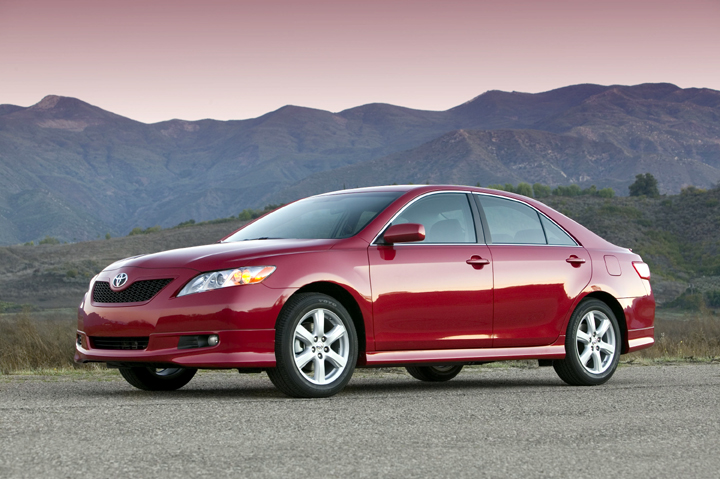"I would suggest that Toyota probably does not use Six Sigma, or it is not the reason for succcess. Japanese manufacturing in general benefitted from the work of W. E. Deming, and as a Deming disciple I can tell you that Deming philosopy is very different from Six Sigma."
Japanese manufacturing initially benefitted from Sarasohn and Protzman during the occupation, and later from Deming; see below for something similar that I've posted several times on bitog. I first read the story as something like 'Lessons Learned and Lesson Forgotten' in Forbes a couple of decades ago, and have come to appreciate it more over the years.
It's easy to get become a 'true believer' about some program, but having seen so many quality programs introduced over the years I look at each as a tool, typically useful in some situations but not all, but certainly more useful in a box full of tools as opposed to being the 'one true program' to be used in all situations.
A decade and a half ago I worked with fortune 100 company to develop critical performance parameters for it's products and we ended up using a uniform distribution with 4.5s to compare to limits; that's about seven sigma to the limits using a normal distribution, so we were certainly the goodest of all as were SEVEN SIGMA ! Not, as it's just something that made sense to us due to how our parts, assemblies, and products were characterized, and wouldn't make sense to blindly copy elsewhere. Tools don't think, people do.
http://www4.gsb.columbia.edu/deming/about
The Deming Center, located within Columbia Business School, was founded in 1990 during W. Edwards Deming's last year at Columbia. The center focuses on developing thought leadership in three major initiatives: Revenue Optimization, Advanced Commerce Research, and Six Sigma. The center organizes major conferences and seminars in an effort to bridge the gap between industry and academia. It also sponsors the Deming Cup, an award that recognizes individuals for operations excellence.
http://www4.gsb.columbia.edu/deming/six_sigma
Six Sigma is the Deming Center’s newest initiative. While the Deming Center's three initiatives are all inextricably linked to one another in their pursuit of quality management, service, and profit goals, Six Sigma is universally recognized as an effective tool to drive efficiency and quality across many industries. Six Sigma embodies the principles of total quality management that W. Edwards Deming sought to establish in every industry he touched. Six Sigma methodology also focuses on measuring results by reducing product or service failure rates to 3.4 per million. All aspects of a Six Sigma company’s infrastructure must be analyzed, and if necessary, restructured to increase revenues and raise the level of customer satisfaction.
http://www.pbs.org/cringely/pulpit/2000/pulpit_20000525_000408.html
Stranger in a Strange Land: How Homer Sarasohn Brought Industrial Quality to Japan and Why It Took Japan So Long to Learn
......After he set up the Electrical Test Laboratory, Sarasohn wanted to develop a course in American management techniques specifically for Japanese plant managers. But some members of the occupation forces opposed spreading U.S. production know-how to the Japanese.
The issue was decided in a 20-minute presentation before General MacArthur. The General had long before stopped following the letter of his original orders, which told him specifically to "not assume any responsibility for the economic rehabilitation or strengthening of the Japanese economy." Sarasohn argued that without better management, Japan would be a long-term drain on U.S. taxpayers. His opposition, the head of the Economics and Social Section, argued that the program Sarasohn was proposing could turn Japan into an economic monster that would threaten the U.S. in world markets.
"Go do it," MacArthur said casually on his way out the door, changing the course of world history.
Working with Charles Protzman, an engineer from Western Electric who had been brought in to run the Japanese telephone system, Sarasohn wrote a textbook and prepared a syllabus for what they called the Civil Communication Section Management Seminar. It was a required seminar for senior electronics industry executives, meeting eight hours per day, four days per week for eight weeks.
"The course was quality control, management concepts, and philosophy," Sarasohn remembered. "We'd ask them why their companies were in business, and they'd either look at us blankly or say that they were in business to make a profit, which was incorrect. The right answer was that they were in business to achieve some appropriate long-term goal, like taking the technical lead in manufacturing radio equipment. Unless you can come up with a reason, a motto, a clear statement of why you are in business, then you aren't in business. And we taught them that that motto had to be understood at all levels of the company."
"The example we held up was Newport News Shipbuilding, whose motto was: 'We will build good ships here — at a profit if we can, at a loss if we must, but always good ships,'" Sarasohn said.
The CCS Management Seminar was taught in Tokyo and Osaka, and covered a systems approach to manufacturing, integrating customer satisfaction into continued product development. The seminars taught industrial engineering, cost control, and the value of investing in research and development. They taught that workers on all levels of the company should be included in product development. But mainly the course stressed quality control, that it is a state of mind that can't be inspected into a product. Quality, the managers were taught, is a measure of the worthiness of their companies.
Managers who had finished the CCS course were required to teach the same lessons again to executives at their own factories, using the textbook written by Sarasohn and Protzman. After both men left Japan in 1950, the CCS Management Seminar was given for the next 25 years by the Japan Management Association. Their textbook, Fundamentals of Industrial Management, is still in print in Japan.
Early graduates Sarasohn's seminar were Ibuka and Morita of Sony, Matsushita Electric's Masaharu Matsushita, and Mitsubishi Electric's Takeo Kato.........







